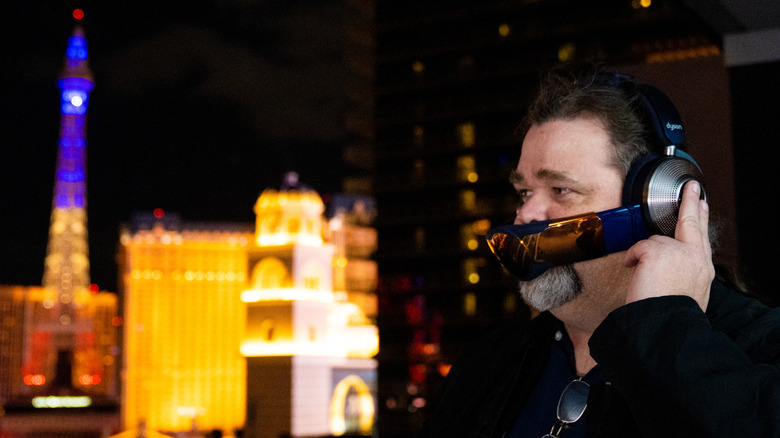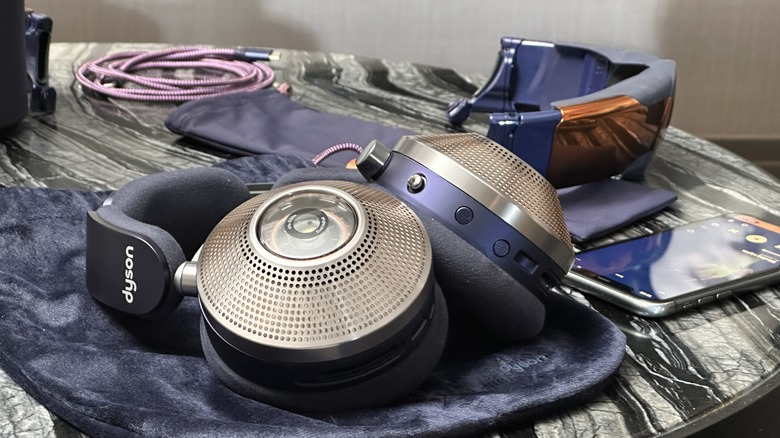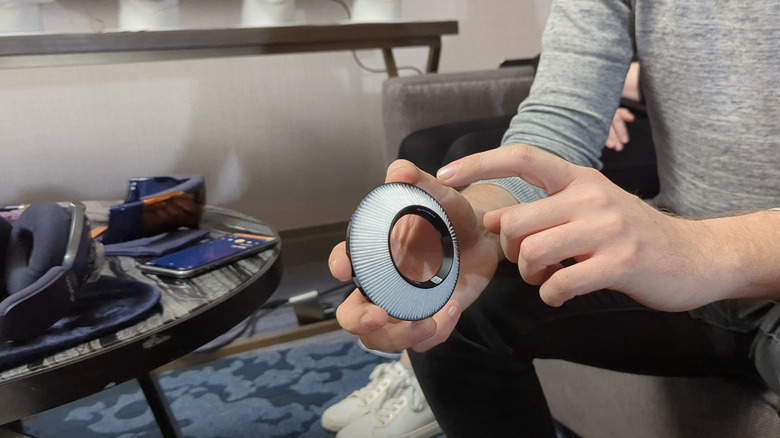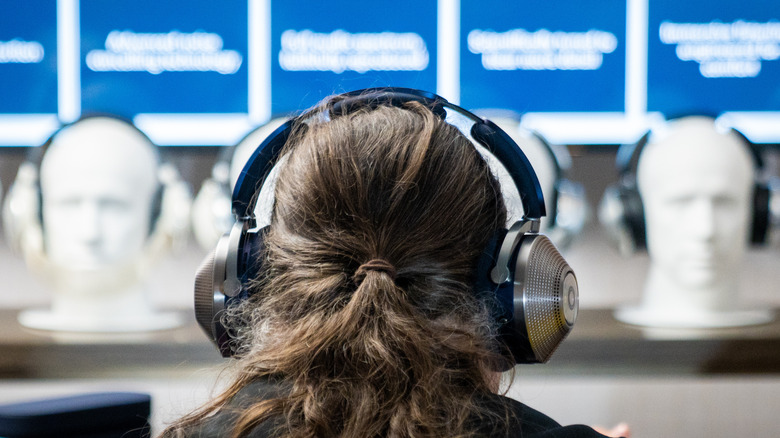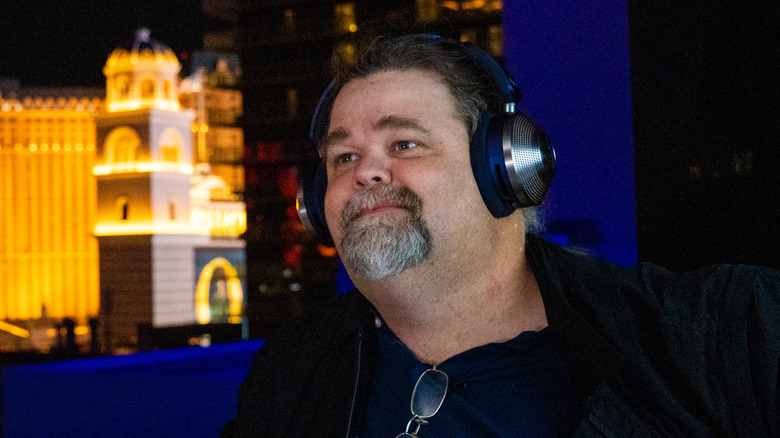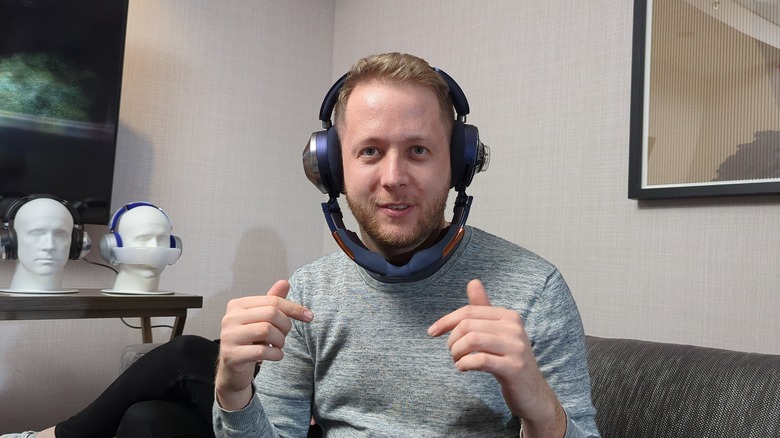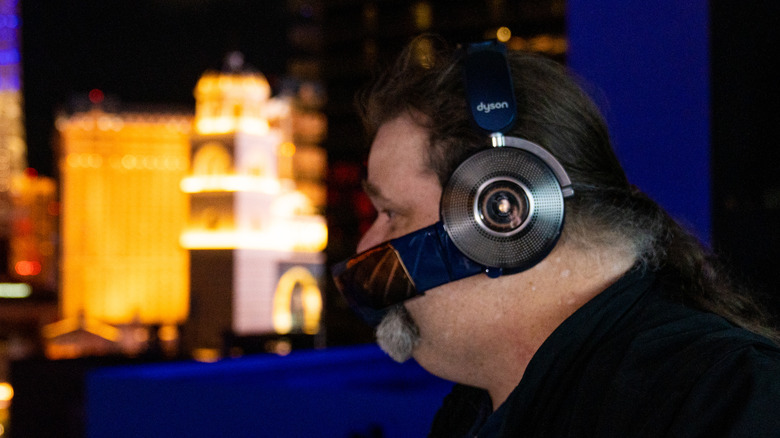Dyson Zone Won Some Points, But Doubts Remain: CES 2023 Hands-On
Months ago, when word came out that Dyson — the vacuum maker — was coming out with a set of headphones, let's just say I was quite skeptical. The idea that Dyson is promoting is a noble one: rid yourself of as much pollution as you can. I just wasn't positive the best way to do that was to create a set of headphones with a strap across my face, like something out of a Batman comic. So, when Dyson offered me the opportunity to try out the product, I took it as an easy way to grab some laughs and dunk on a weird product. Boy was I wrong.
At least, I was mostly wrong. The fact of the matter is these headphones are really good. They sound great. The Active Noise Cancellation (ANC) is stellar. They're comfortable to wear, and yes, they look goofy as hell. But before we get into the nuts and bolts, let's talk about the story.
Pollution is ugly
Pollution comes in many forms, and the two we're dealing with here are air pollution and noise pollution. You see, Dyson didn't set out to make a rocking pair of cans for you to enjoy your tunes. Its goal was to reduce the air pollution and noise pollution you deal with when walking around a big city. Headphones seemed like the natural way to go.
I spoke with David Hill, Senior Design Manager at Dyson. David has worked on the Dyson Zone for three of the six years they've been in development. The engineering challenges the company overcame to produce this project are huge, but what it has built is a system of cleaning and filtering the air you breathe while at the same time reducing the noise around you by as much as 38 dB. Put together and regular users of the Dyson Zone could find themselves healthier in the long run.
From the outside in
To understand how these headphones work, it's necessary to view them from the outside in. The first part you'll deal with then is air filtration. Dyson uses two filters — an electrostatic filter and a K-Carbon filter — to remove particulates (down to 0.1 micron), dust, and nasty smells from the air. Under that is the compressor, which is the smallest compressor that Dyson has ever built. That's what sucks the air in through the filters and pushes it to the mouth. Each compressor has a drum that rotates up to 10,000 rpm. It needs to be precisely balanced because if it isn't, it vibrates and creates noise. In order to balance them, each drum is individually calibrated by drilling away small amounts of material. The cool part is that means every drum is unique.
From there, the air flows into the mask and through a mesh that creates what is essentially a bubble of clean air in front of your face, and just like that, it's all easy breathing. Meanwhile, the padding on the earcups provides a good amount of isolation from noise pollution, and the ANC takes care of the rest. To demonstrate, Dyson asked me to stand on their suite's patio with a large air compressor nearby — the kind used for pumping air into a casino for example. Sure enough, when I activated the ANC most of the noise disappeared. I still heard a high-pitched whine, somewhere around 4,000 hertz or so, but once I started the music, that disappeared too. Speaking of the music ...
These headphones sound amazing
I'm not enough of an audiophile to be able to discern the subtleties of music and sound. Ironically, 12 years of playing in a band destroyed most of my hearing. What I can tell you is that there's the normal set of headphones I use, and then there are these. The sound quality is much clearer and I could pick out a wider range of tones within the music. Put simply, CES may have ruined my headphones for me, but I digress.
The headphones themselves are extremely comfortable to wear (until you add the face mask, but we'll talk about that later). The headband is padded with the same material as the ear cups so it's like a small series of pillows being strapped to your head. I only wore them for about 20 minutes or so in the cold night air of Las Vegas in January, so how the headphones will hold up over a long listening session, I can't say. I would be surprised if an eight-hour workday was not tolerable.
Active Noise Cancellation is solid
All the noise cancellation — passive and ACN — is quite effective. When I wore the headphones with ANC turned on, I could barely hear anything from outside. Even people speaking, which is traditionally harder to filter out, was greatly reduced. ANC is activated by double tapping either side of the headphones. Inside you hear a sound like a cap being put onto a tube that shuts the noise down, and when you turn it off, it sounds like the cap is being removed, letting sound in.
Speaking of which, the pass-through mode — where you can talk to other people around you while wearing the headphones — is also stellar. Too often, a set of headphones will boost all the noise around you to allow you to hear the people next to you. These cans make it sound like you simply took them off. There's no boosted ambient noise; it's just the voices of the people you're trying to talk to. Put simply, this is arguably the best noise cancellation I have ever heard, but I need to caveat that by pointing out that I have never tested some of the Mt. Rushmore of noise cancellation, like the AirPods Max or the Sony wh-1000xm4. Still, I can attest these are very, very good.
But now the face mask
Dyson "zone" is an appropriate name because when you attach the face mask, you are essentially in your own little bubble of clean air and silence. There's really no other way to put it. But the mask looks a little strange, no doubt. Fortunately, it does not seal against your face. The mask actually juts out past your face a bit in order to form this bubble. That's helpful, and I think that will help lure some folks over to it. If this was meant to seal up against your face, there would be major obstacles, not the least of which would be my goatee.
This is designed to extend out in front of your face, and indeed it can be flipped down. Doing so stops your music, turns off the fans, and switches you to passthrough mode. That's cool. I found that even with the mask extended as far as it would go, the bottom edge sat against my beard, and I had to maneuver my chin a bit to get the mask down. It wasn't uncomfortable, but it seemed like my face was just a bit bigger than Dyson's engineers planned for. Of course, that's not the biggest obstacle Dyson has to face, is it? Let's just address the elephant in the room, shall we?
Is the mask acceptable?
It occurred to me during my conversation with David that we have just gotten over (or, in some cases, are still getting over) two years of wearing face masks, so let's be honest, is this that much of a stretch? I still think, yeah, it is a bit of a stretch.
Don't get me wrong; I'm not condemning the idea outright. But I just think the design is a bit more than society as a whole can handle right now. Some people care deeply about their environment and what they're breathing into their lungs. But a lot more people just don't. Right or wrong, that's where I think we are. The true test will come when I wear this outside of a suite in Las Vegas and walk around the town and look at people's faces as they pass me. It will come when I show up for a party at a friend's house wearing them. That will be the true test. It's possible people won't care, but it's more likely that they will.
As for me, now that I know the story, I can accept them, and even embrace them. I hope others are the same way. I'm not 100% convinced that I'll wear these all the time for the rest of my life, but I think I will understand why someone might.
